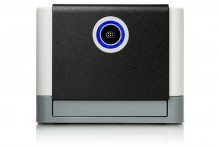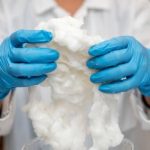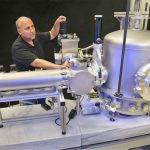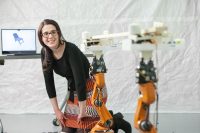10X Genomics Emerges With $80M and Toaster-Sized Sequencer improve (DD)

Alex Lash, January 12, 2015
Making Illumina’s industry-top gene sequencing machines better? There’s an app for that.
That’s the shorthand pitch from fresh-from-stealth sequencing company 10X Genomics, which is unveiling itself today with $ 80 million in challenge funding. It has already raised two rounds, the newest being a $ fifty five.5 million sequence B led by means of Foresite Capital management, with Venrock, the sequence A lead, and others becoming a member of.
The Pleasanton, CA-primarily based firm’s product is a $ 75,000 box in regards to the size of a toaster (pictured) that hooks up to any Illumina (NASDAQ: ILMN) computing device and—in line with its inventors—provides researchers fuller, more correct genetic knowledge than they may in the past squeeze from a DNA pattern.
“We will let you use existing sequencing technology, however to improve and reconstruct the full sequence,” mentioned 10x Genomics founder and CEO Serge Saxonov. “You don’t want to swap out machines. Our box is incremental.”
The information comes amid what seems like close to-regular shake-up in the sequencing and clinical diagnostics fields. one of the vital leaders in complete-tumor sequencing, foundation drugs (NASDAQ: FMI), introduced the day past it could join forces with trade powerhouse Roche, with Roche buying a majority pastime.
With its as-yet-unnamed instrument, 10X goals to bridge the hole between the “brief read” sequencing know-how utilized by Illumina and life technologies, a division of Thermo Fisher Scientific (NYSE: TMO), and the more elusive “lengthy learn” technology that firms like Pacific Biosciences (NASDAQ: PBIO) have struggled to popularize.
Saxonov declined to get too specific, but right here’s a high-level description of what their computer does. It takes a DNA sample and breaks it into hundreds of heaps of fragments—”quick reads”—simply as the current state-of-the-art technology does. but present technology can only care for a sampling of those fragments, extracting the code, then piecing them back collectively in a best approximation.
10X doesn’t require as large a DNA sample, consistent with VP of promoting Rob Tarbox, so with a smaller selection of fragments, its instrument can assign each one an oligonucleotide “tag”—recall to mind it as a barcode—and its own “vessel” that preserves and permits the tracking of each and every fragment. As many as 200,000 of these picoscale vessels can fit into a single well on a disposable microfluidic chip.
Like device developers who roll out their app first for the preferred smartphone, their box is suitable simplest with Illumina sequencers for now. “they have particularly dominant share within the high throughput end of the market,” said Tarbox. “As we see the response from the market, we will regulate quickly to let fortify for different providers.”
10X didn’t collaborate with nor obtain any assist from Illumina, stated Tarbox.
Saxonov in the past was once founding architect at 23andMe, where he ran R&D. He and others were also executives at QuantaLife, a digital PCR firm.
10X’s chairman is John Steulpnagel, an Illumina cofounder and its unique CEO, who has additionally been excited about bioinformatics companies Ariosa Diagnostics, recently got through Roche,
and Sequenta, which was once bought by Adaptive Biotechnologies remaining week.
Saxonov described a key lesson he realized at 23andMe that has pushed his imaginative and prescient for 10X Genomics: when you start to interpret knowledge, and the data should not just right sufficient, you attempt to do better algorithms to research the sequencing. “however one day,” he stated, “you realize you need to trade the info [you gather] to interpret issues in a more powerful means.”
in addition to providing extra complete sequencing data, the company’s know-how will supply researchers a “better set of binoculars” to interpret it, Saxonov said. for instance, he said, “huge rearrangements within the genome—mutations from one region of the genome to every other—are it seems that moderately standard and pressure illness states, but they’re hard to see with short-read sequencing.”
(165)













